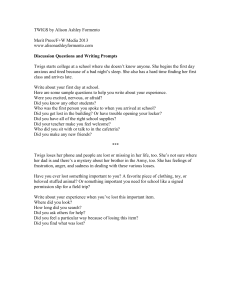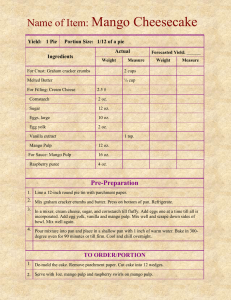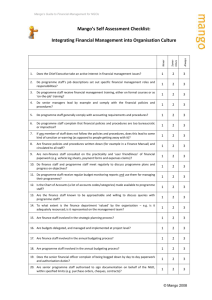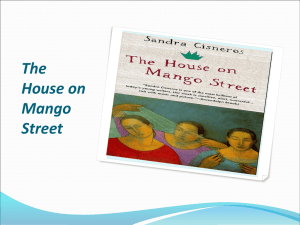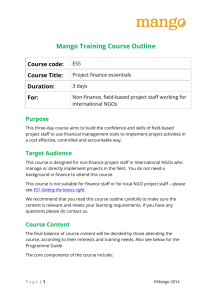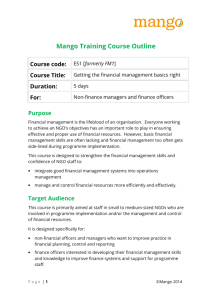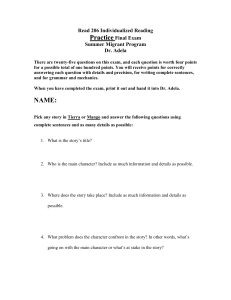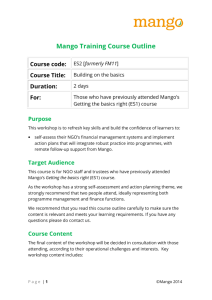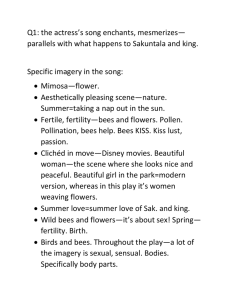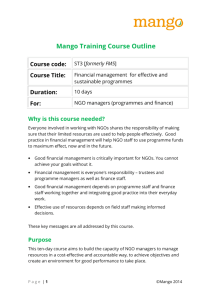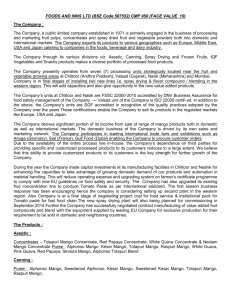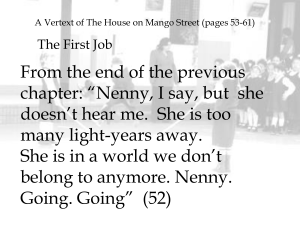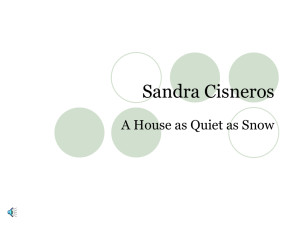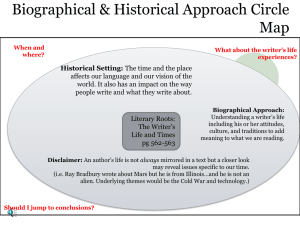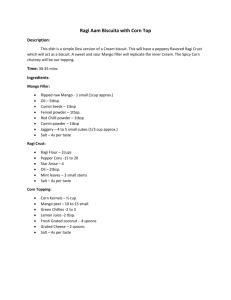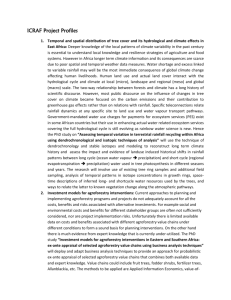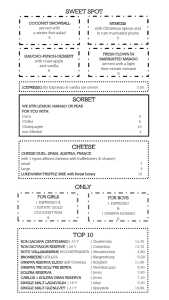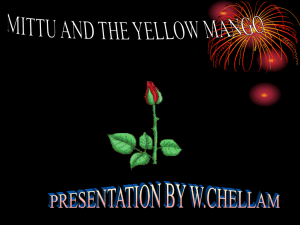PP Problems on Mango, Arecanut and Citrus
advertisement
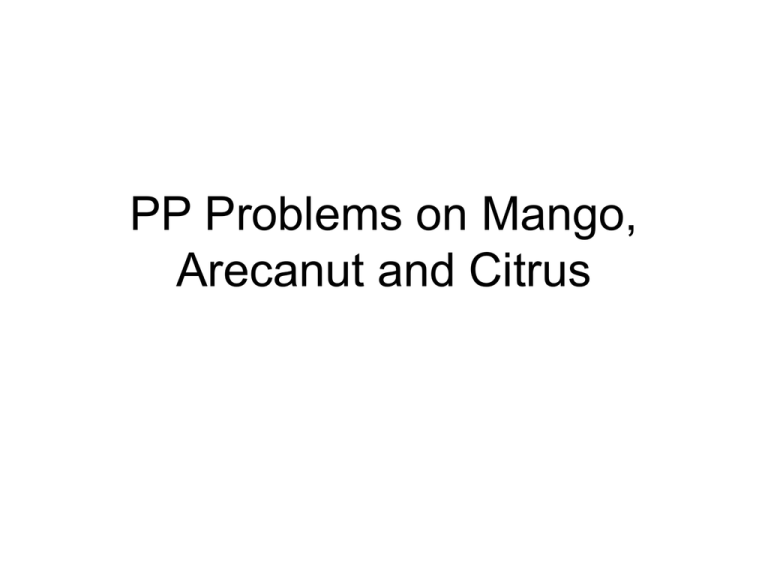
PP Problems on Mango, Arecanut and Citrus Mango decline syndrome Synonyms: – Die-back – Mango quick decline – Mango sudden death • What is gummosis? • Exudation of gum Mango quick decline • Most dramatic form of the decline syndrome • The tree appears normal but suddenly starts to wilt. • Within a couple of days the affected portions of the tree (twigs or branches) completely wilts and dies. • Usually begin on one side and later spreads to the entire tree. • Trees exude ambercolored gum from the bark of their trunks or branches • Vascular tissues are discolored. Xylem tissue appears as striated brownish streaks Cause: Fungi • The fungus Ceratocystis fimbriata, Lasiodiplodia theobromae (syn. Botryodiplodia theobromae) • Bark beetles (Hypocryphalus mangiferae) are shown to carry C. fimbriata and L. theobromae and are presumably responsible for transmitting both pathogens to healthy mango trees. • In Pakistan, the Asian Ambrosia beetle (Xylosandrus crassiusculus (Motschulsky) is associated with the disease complex. The beetle is known to spread the fungus to healthy trees. As the fungus grows, the beetle feeds on them. Mango Die-back • Die back is one of the serious diseases of mango in India too. • The disease is most conspicuous during Oct.-Nov. • The disease is characterized by drying of twigs and branches followed by complete defoliation, which gives the tree an appearance of scorching by fire. Management (i) Prune the diseased twigs and spray with copper oxychloride (0.3%) on infected trees. Pruning should be done in such a way that the twigs are removed 2-3 inches below the affected portion. (ii) In small plants, pruning of twigs is followed by pasting of copper oxychloride. Bordeaux paste could be used instead of copperoxychloride. Bud rot of arecanut • Cause: Fungus (Phytophthora palmivora) Losses up to 10-25% of trees (Yuden and Dorji[1]). This disease affects palms of all ages. • It starts with yellowing of one or two young leaves surrounding the spindle. • The spindle and the older leaves droop down followed by the rotting of tender leaf bases and soft tissues of the growing shoot. • The leaf bases forms a bulge and is filled with foul-smelling liquid. • After the death of the central bud, the outer leaves and bunches remain intact for several months. • The disease is mostly seen during the rainy season when the humidity is high. Management • In the early stages of infection, split the palm longitudinally at the bulging section • Scoop the rotten tissues should • Remove and destroy affected spindle and leaves. • Apply bordeaux paste on the exposed healthy tissues or drench crown with 1% Bordeaux mixture.
